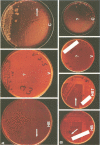Abstract
New selective and differential human blood bilayer agar media with Tween 80 (HBT medium) or without Tween 80 (HB medium), developed for the isolation of Gardnerella (Haemophilus) vaginalis, permitted significantly higher G. vaginalis isolation rates than have been obtained for other media used for this purpose. HB medium consists of a basal layer of Columbia agar base containing colistin and naladixic acid with added amphotericin B and an overlayer of the same composition plus 5% human blood. HBT agar also contains Proteose Peptone No. 3 (Difco Laboratories) and Tween 80 in the basal layer and the overlayer. Both Tween 80 and the bilayer composition enhanced G. vaginalis production of human blood hemolysis, permitting detection of this organism even in the presence of heavy growth of other vaginal flora. The use of HB or HBT medium thus permitted the demonstration that G. vaginalis was present in vaginal fluid from a large percentage (up to 68%) of normal women. However, the concentration of G. vaginalis was found by semiquantitative analysis to be significantly higher in vaginal fluid from women with nonspecific vaginitis than in fluid from normal women.
Full text
PDF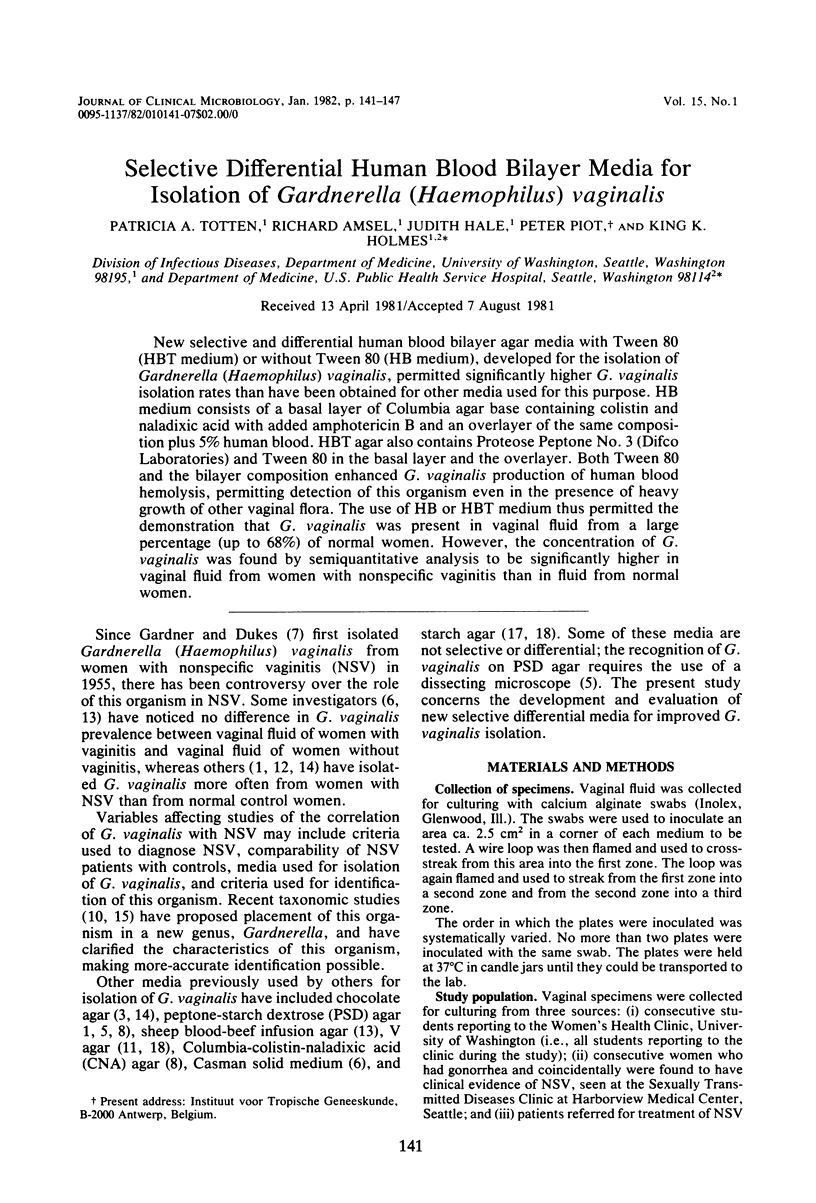
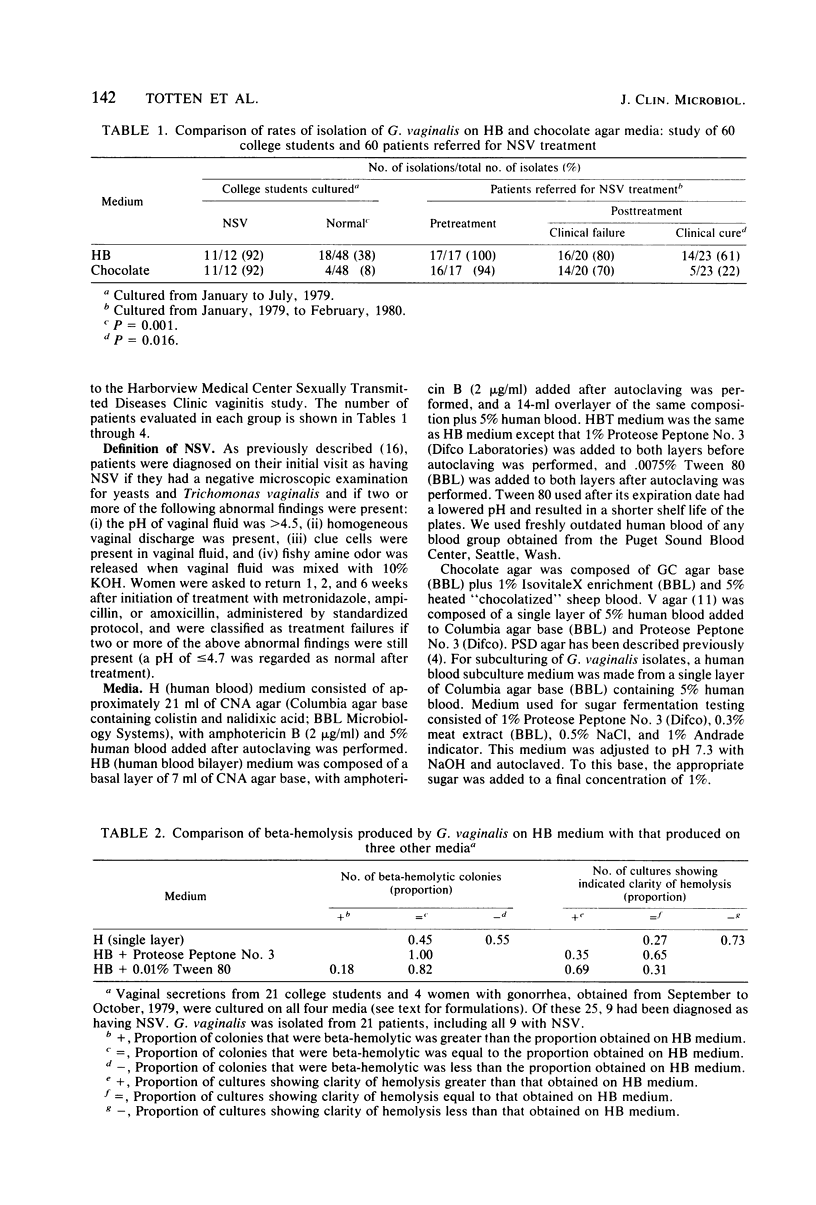
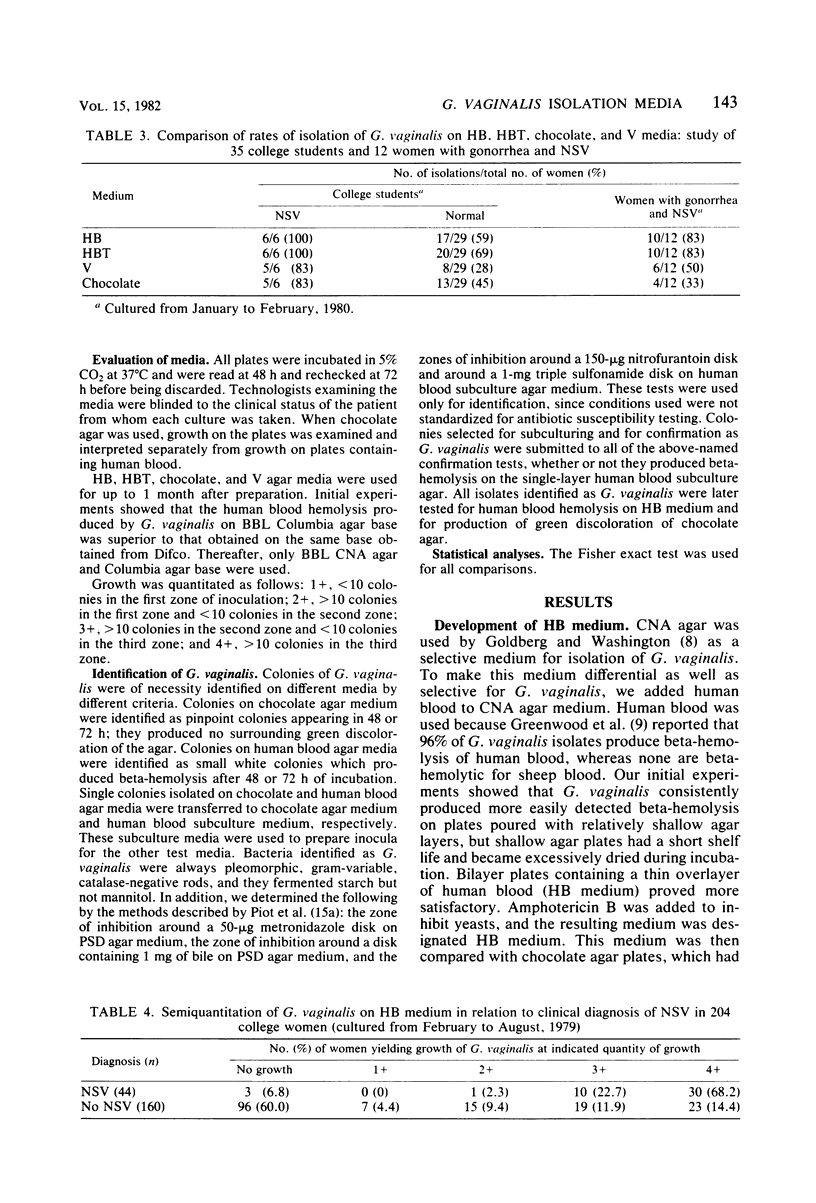
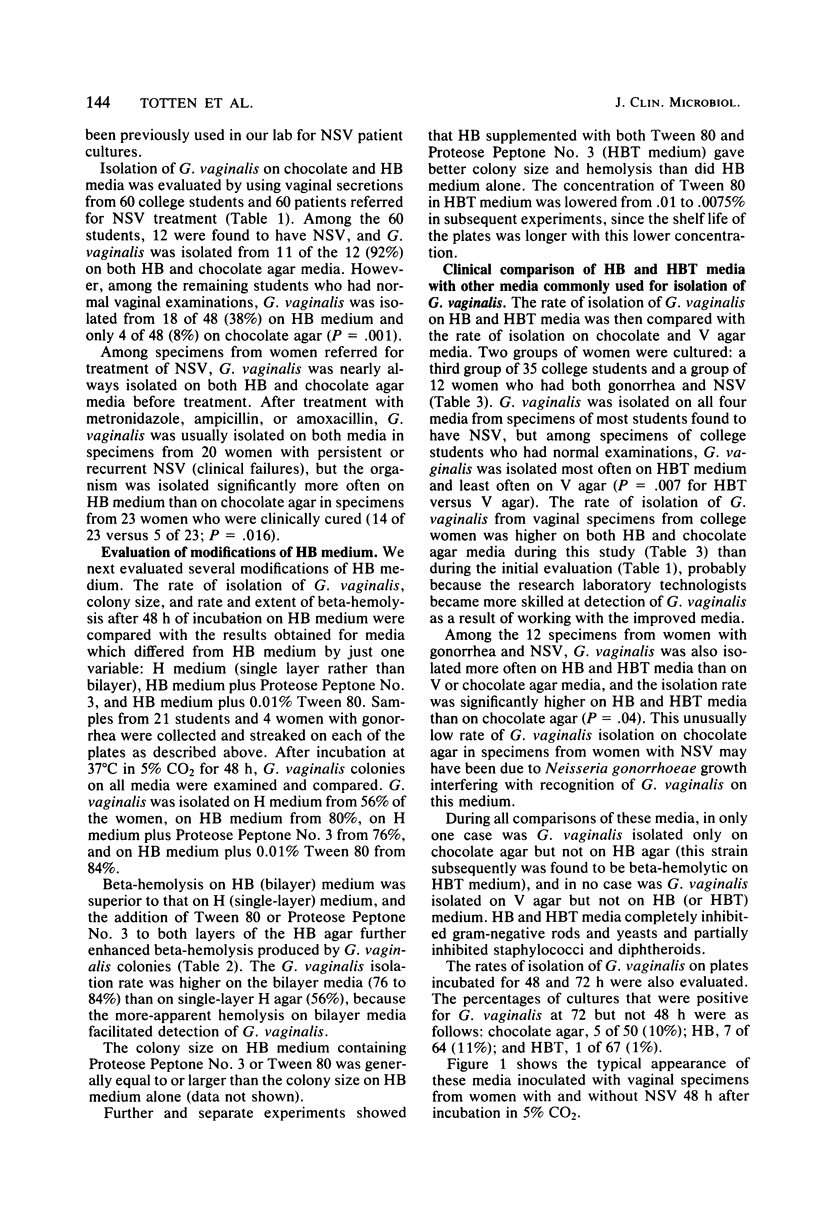
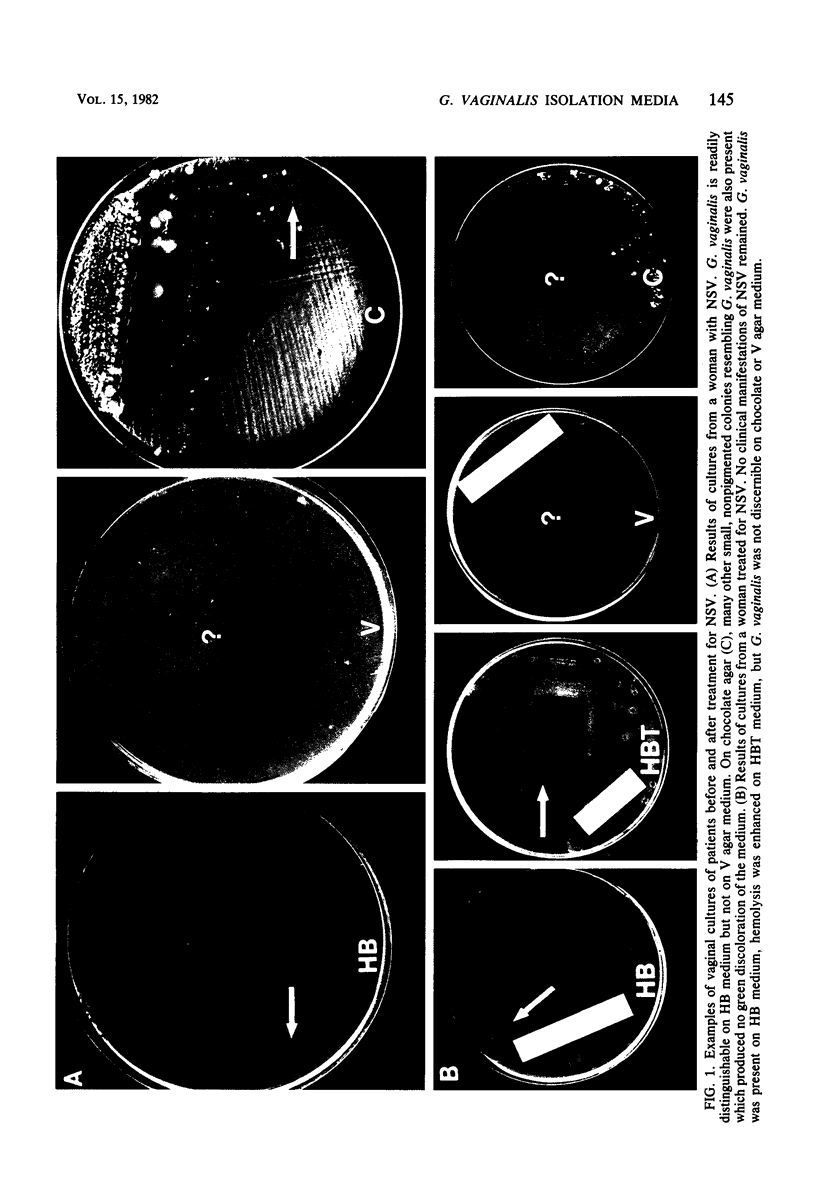
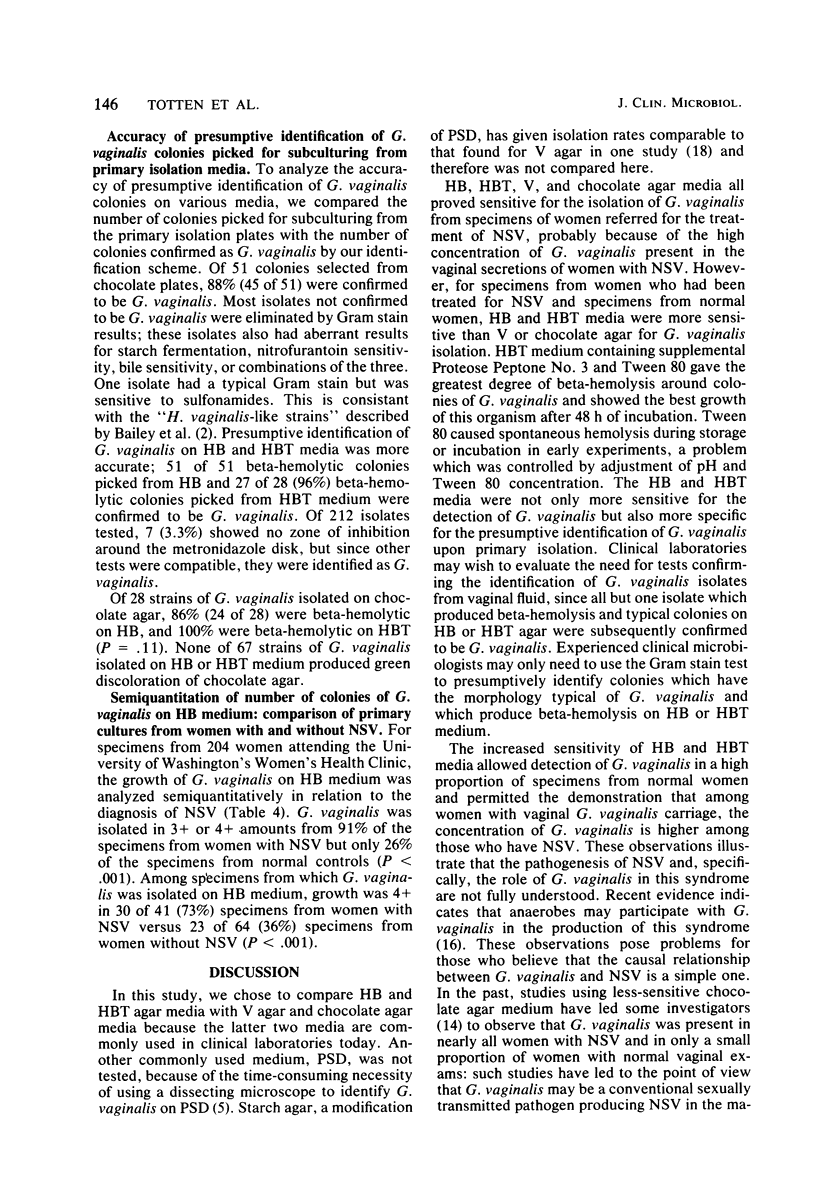
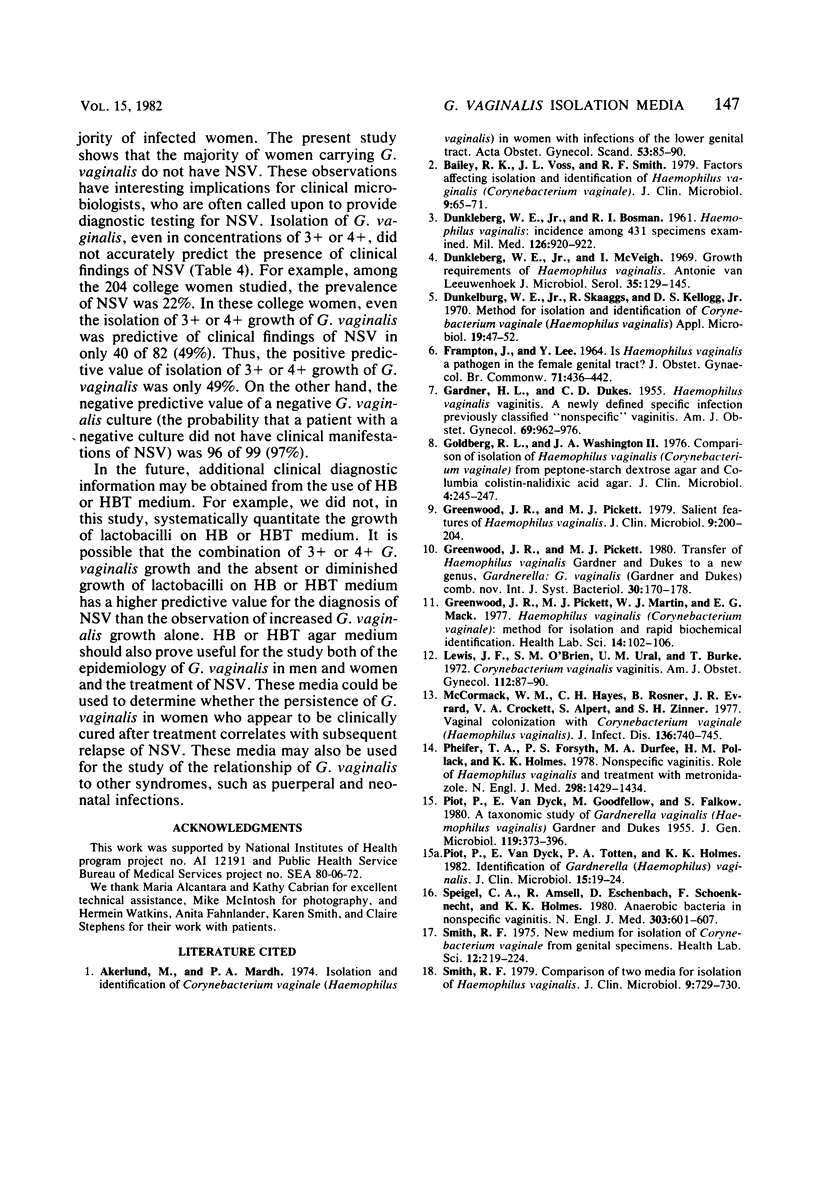
Images in this article
Selected References
These references are in PubMed. This may not be the complete list of references from this article.
- Akerlund M., Mårdh P. A. Isolation and identification of Corynebacterium vaginale (Haemophilus vaginalis) in women with infections of the lower genital tract. Acta Obstet Gynecol Scand. 1974;53(1):85–90. doi: 10.3109/00016347409156894. [DOI] [PubMed] [Google Scholar]
- Bailey R. K., Voss J. L., Smith R. F. Factors affecting isolation and identification of Haemophilus vaginalis (Corynebacterium vaginale). J Clin Microbiol. 1979 Jan;9(1):65–71. doi: 10.1128/jcm.9.1.65-71.1979. [DOI] [PMC free article] [PubMed] [Google Scholar]
- DUNKELBERG W. E., Jr, BOSMAN R. I. Haemophilus vaginalis: incidence among 431 specimens examined. Mil Med. 1961 Dec;126:920–922. [PubMed] [Google Scholar]
- Dunkelberg W. E., Jr, McVeigh I. Growth requirements of Haemophilus vaginalis. Antonie Van Leeuwenhoek. 1969;35(2):129–145. doi: 10.1007/BF02219124. [DOI] [PubMed] [Google Scholar]
- Dunkelberg W. E., Jr, Skaggs R., Kellogg D. S., Jr Method for isolation and identification of Corynebacterium vaginale (Haemophilus vaginalis). Appl Microbiol. 1970 Jan;19(1):47–52. doi: 10.1128/am.19.1.47-52.1970. [DOI] [PMC free article] [PubMed] [Google Scholar]
- FRAMPTON J., LEE Y. IS HAEMOPHILUS VAGINALIS A PATHOGEN IN THE FEMALE GENITAL TRACT? J Obstet Gynaecol Br Commonw. 1964 Jun;71:436–442. doi: 10.1111/j.1471-0528.1964.tb04302.x. [DOI] [PubMed] [Google Scholar]
- GARDNER H. L., DUKES C. D. Haemophilus vaginalis vaginitis: a newly defined specific infection previously classified non-specific vaginitis. Am J Obstet Gynecol. 1955 May;69(5):962–976. [PubMed] [Google Scholar]
- Golberg R. L., Washington JA I. I. Comparison of isolation of Haemophilus vaginalis (Corynebacterium vaginale) from peptone-starch-dextrose agar and Columbia colistin-nalidoxic acid agar. J Clin Microbiol. 1976 Sep;4(3):245–247. doi: 10.1128/jcm.4.3.245-247.1976. [DOI] [PMC free article] [PubMed] [Google Scholar]
- Greenwood J. R., Pickett M. J., Martin W. J., Mack E. G. Heamophilus vaginalis (Corynebacterium vaginal): method for isolation and rapid biochemical identification. Health Lab Sci. 1977 Apr;14(2):102–106. [PubMed] [Google Scholar]
- Greenwood J. R., Pickett M. J. Salient features of Haemophilus vaginalis. J Clin Microbiol. 1979 Feb;9(2):200–204. doi: 10.1128/jcm.9.2.200-204.1979. [DOI] [PMC free article] [PubMed] [Google Scholar]
- Lewis J. F., O'Brien S. M., Ural U. M., Burke T. Corynebacterium vaginale vaginitis. Review of the literature and presentation of data based on vaginal cultures from 1,008 patients. Am J Obstet Gynecol. 1972 Jan 1;112(1):87–90. [PubMed] [Google Scholar]
- McCormack W. M., Hayes C. H., Rosner B., Evrard J. R., Crockett V. A., Alpert S., Zinner S. H. Vaginal colonization with Corynebacterium vaginale (Haemophilus vaginalis). J Infect Dis. 1977 Dec;136(6):740–745. doi: 10.1093/infdis/136.6.740. [DOI] [PubMed] [Google Scholar]
- Pheifer T. A., Forsyth P. S., Durfee M. A., Pollock H. M., Holmes K. K. Nonspecific vaginitis: role of Haemophilus vaginalis and treatment with metronidazole. N Engl J Med. 1978 Jun 29;298(26):1429–1434. doi: 10.1056/NEJM197806292982601. [DOI] [PubMed] [Google Scholar]
- Piot P., Van Dyck E., Totten P. A., Holmes K. K. Identification of Gardnerella (Haemophilus) vaginalis. J Clin Microbiol. 1982 Jan;15(1):19–24. doi: 10.1128/jcm.15.1.19-24.1982. [DOI] [PMC free article] [PubMed] [Google Scholar]
- Piot P., van Dyck E., Goodfellow M., Falkow S. A taxonomic study of Gardnerella vaginalis (Haemophilus vaginalis) Gardner and Dukes 1955. J Gen Microbiol. 1980 Aug;119(2):373–396. doi: 10.1099/00221287-119-2-373. [DOI] [PubMed] [Google Scholar]
- Smith R. F. Comparison of two media for isolation of haemophilus vaginalis. J Clin Microbiol. 1979 Jun;9(6):729–730. doi: 10.1128/jcm.9.6.729-730.1979. [DOI] [PMC free article] [PubMed] [Google Scholar]
- Smith R. F. New medium for isolation of Corynebacterium vaginale from genital specimens. Health Lab Sci. 1975 Jul;12(3):219–224. [PubMed] [Google Scholar]
- Spiegel C. A., Amsel R., Eschenbach D., Schoenknecht F., Holmes K. K. Anaerobic bacteria in nonspecific vaginitis. N Engl J Med. 1980 Sep 11;303(11):601–607. doi: 10.1056/NEJM198009113031102. [DOI] [PubMed] [Google Scholar]



